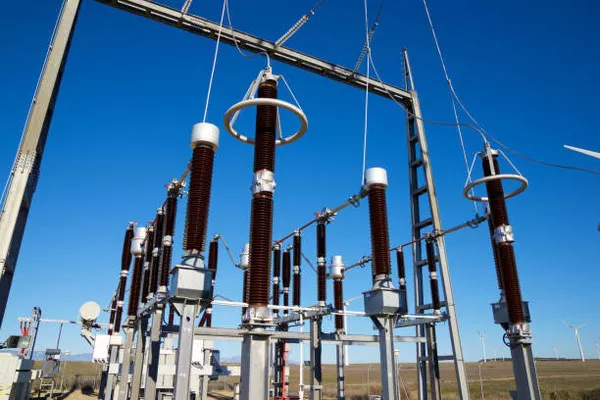Electrical transformers stand as silent sentinels in the world of power distribution, playing a crucial role in ensuring the efficient transmission of electrical energy from power plants to end-users. These indispensable devices have been an integral part of the electrical infrastructure for over a century. In this article, we delve into the inner workings of electrical transformers, shedding light on their components, functions, and the transformative processes that take place within their metallic confines.
Core Components
At the heart of every electrical transformer lies a carefully crafted assembly of core components that work in unison to facilitate the transformation of electrical energy. These key components include the core, windings, and insulating materials.
1. Core:
The core serves as the backbone of the transformer, providing structural support while facilitating the magnetic flux required for energy transfer. Typically constructed from laminated sheets of iron or steel, the core minimizes energy losses by reducing eddy currents—undesirable circulating currents within the core material. The laminations help to insulate each layer, preventing wasteful heat generation and optimizing the efficiency of the transformer.
2. Windings:
Windings, consisting of conductive wire, are responsible for the primary and secondary circuits within a transformer. The primary winding, connected to the power source, induces a magnetic field within the core when current flows through it. Simultaneously, the secondary winding, connected to the load, captures the magnetic flux and converts it back into an electrical current. The ratio of turns in the primary and secondary windings determines the voltage transformation ratio, a critical parameter for regulating power distribution.
3. Insulating Materials:
To prevent electrical breakdown and ensure the safe and reliable operation of transformers, insulating materials are strategically placed within the assembly. These materials, often made of paper, oil, or other dielectric substances, act as barriers between conductive elements, preventing unintended electrical contact. They also contribute to the overall structural integrity of the transformer.
Working Principle
Understanding the working principle of electrical transformers is fundamental to appreciating their significance in power distribution. The process begins with alternating current (AC) flowing through the primary winding, generating a magnetic field within the core. This magnetic field induces a voltage in the secondary winding, thereby transforming the electrical energy to a different voltage level. The efficiency of this process is a testament to the meticulous design and engineering that goes into creating transformers, making them indispensable in the transmission and distribution of electricity.
Types of Transformers
Transformers come in various types, each designed for specific applications based on their voltage transformation capabilities and usage scenarios. Some of the common types include:
1. Power Transformers:
These transformers are the workhorses of the electrical grid, facilitating the bulk transmission of power from generating stations to distribution substations. Power transformers are characterized by high voltage transformation ratios and are crucial for maintaining the stability of the power grid.
2. Distribution Transformers:
Operating at lower voltage levels, distribution transformers are responsible for stepping down the voltage to levels suitable for end-users. They are commonly found on utility poles or in substations, ensuring that electricity reaches homes, businesses, and industries at the required voltage.
3. Instrument Transformers:
Instrument transformers, including potential transformers and current transformers, play a vital role in metering and protection applications. They provide accurate measurements of voltage and current, enabling the monitoring and control of electrical systems.
Maintenance and Lifespan
The longevity and performance of electrical transformers hinge on proactive maintenance measures. Regular inspections, oil sampling, and testing of insulation resistance are critical to identifying potential issues before they escalate. Over time, transformers may experience wear and tear due to factors such as temperature variations, electrical stresses, and environmental conditions. Timely maintenance not only ensures optimal performance but also extends the lifespan of transformers, contributing to the reliability of the power distribution network.
Challenges and Innovations
While transformers have been a cornerstone of power systems for decades, they are not without challenges. Losses due to resistive heating and inefficiencies in energy transfer remain areas of ongoing research and development. Additionally, advancements in materials and design are being explored to create transformers that are more compact, lightweight, and environmentally friendly.
One notable innovation is the development of smart transformers, equipped with sensors and communication capabilities. These transformers can provide real-time data on their operational status, enabling utilities to monitor and manage their performance more effectively. The integration of digital technologies, such as Internet of Things (IoT) devices, further enhances the resilience and responsiveness of transformers in modern power grids.
Conclusion
Electrical transformers, often overlooked in their silent service, are the unsung heroes of power distribution networks. Their intricate design, precise engineering, and transformative capabilities enable the seamless transmission of electrical energy across vast distances, powering our homes, businesses, and industries. As technology continues to evolve, so too will the innovations in transformer design, ushering in an era of smarter, more efficient, and environmentally conscious power distribution. Appreciating the complexity and significance of electrical transformers is crucial as we navigate the ever-expanding landscape of the modern electricity grid.


